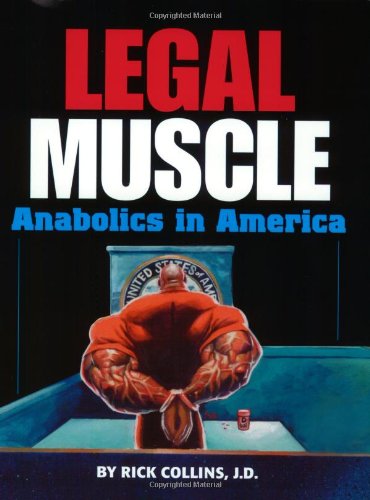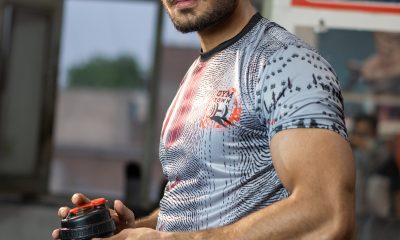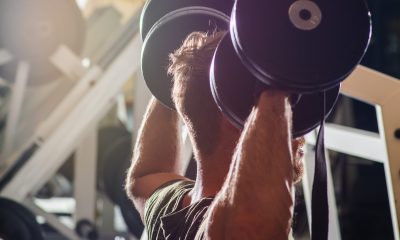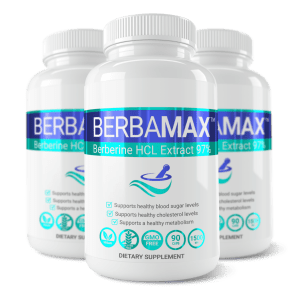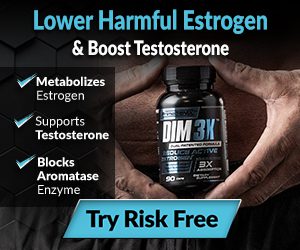Steroids Q/A
5 Top Books About Steroids Use in Bodybuilding

The more you know about steroids use, the better chances that you will make a success of it. But where to educate yourself from? Well, you can choose to read through dozens of forums and blogs or pick one of the many steroid books.
If you are one of those who loves to sit down in bed relax and read that you will definitely go with a book. While a blog like us can be easily found in a search on the internet, finding a powerful book about steroids use in bodybuilding can be sometimes a tricky task.
We decided to share with you best steroid books on gear that we’ve read and are absolutely thrilled with their content. Whether you want to learn about steroids chemical composition, their types and side effects, or find out all the hidden details of testosterone synthetic hormone, you will get all the answers to your craziest questions.
Some of the steroid books listed below are signed by authorities in bodybuilding such as Arnold Schwarzenegger, while others present a range of facts related to steroid use backed by researchers. Are all these steroids books on sale or can you get some for free? The good news is that many of them are free to download in pdf format.
A link to the source where they can be downloaded from will be added later on, so read carefully. If money is not your concern, then do a search on Amazon and enter the titles listed below. Among those 600 results, you will find the ones we mentioned as being worthing your time and money.
The Steroid Bible By Steve Gallaway:
As the title suggests, this anabolic steroid book tells you everything about anabolic steroids regardless of your experience. If you are a novice, you will learn how to properly start using them. If you are an intermediate user than you learn how to maximize your results without risking your health in the long run. You think you know all about steroids?
Well, this book will definitely surprise with tremendous information about how to get off roids use, helping you to preserve 80% of gained muscle mass. Of course, you will also find info about steroids side effects and ways to prevent them. Also, it contains complete information about Testosterone, Clenbuterol, Oxandrolone, Deca-Durabolin, Anavar and many other.
Whatever question you might have about steroids, chances are that you will find the answers in this book. On Goodreads, it has 3 out of 5 rating, which is not bad at all. Unfortunately, you will find it available for download for free, at least we didn’t find it. But if you did, please share the link with us in the comments section. As we know it can be found on Amazon by click below you can find more about it.
Click Here to Find out More & Price
Testosterone for Life:
Chances are that you know what low testosterone levels can cause in men body and you realize the importance of it. “Testosterone for Life” brings more light on this subject and helps you understand how to diagnose low testosterone and, more importantly, how to treat it.
When we know that 1 in 4 men over 30 has low testosterone, but only one in every 20 men has clinical symptoms linked to such a deficiency, it becomes clear why this book is so popular among not only bodybuilders but all men. If you are ready to buy it, then you can find it on Amazon by clicking below.
Click Here to Find out More & Price
Anabolic Steroids and Making Them by Professor Frank:
This is a DIY manual for making anabolic steroids from scratch. We have talked about this here. However, if you want to enjoy an interesting reading along with pictures and detailed info on how to do it - get your hands on this book.
Our recommendation is to always collect as many information as possible about anything you are about to do, check different points of view and in the end make your own conclusion. From this point of view, this is a must-check book. Get it on Amazon by click Below.
Click Here to Find out More & Price
Legal Muscle: Anabolics in America:
What is this book about? As the title suggests inside those 400 pages you will find everything you may ever be wanted to know about AAS and the law in the United States of America. Find out the finest details of the renowned steroid investigations, arrests, and prosecutions all over the US.
Regarding price, it’s one that you may find exaggerated in times when you can find all these investigations online. If you are ready to buy it, then you can find it on Amazon by click below.
Click Here to Find out More & Price
Arnold Schwarzenegger - Encyclopedia:
This is that kind of book that everyone should have it, from golfers to all those who train in the gym. Not in vain it gained the reputation as "The Bible of Bodybuilding." This book will find the latest advances in bodybuilding along with diet, nutrition, and psychology tips.
Also, here you will get insights on how to prevent and proper treatment of injuries. All these advice are illustrated with greatly executed pictures, making the reading a pleasure.
Google for it in pdf and you will get plenty of results. Or do like me. Order it on Amazon by click below.
Click Here to Find out More & Price
Conclusion:
If you love to read not only blogs and forums but also books about steroids, then the above collection of titles is what you need. I hope we intrigued you enough to want to read them. If you reach at least one book from our list, we consider our mission completed. Please note that we have no material interest in recommending these steroid books. We just share what we think is worth to be read and these titles really do.
Must Read Our Article: How to Cut 8-10 Pounds of Water While On Steroids
Steroids
Anadrol Cycle: Benefits, Doses, Alternatives, etc.
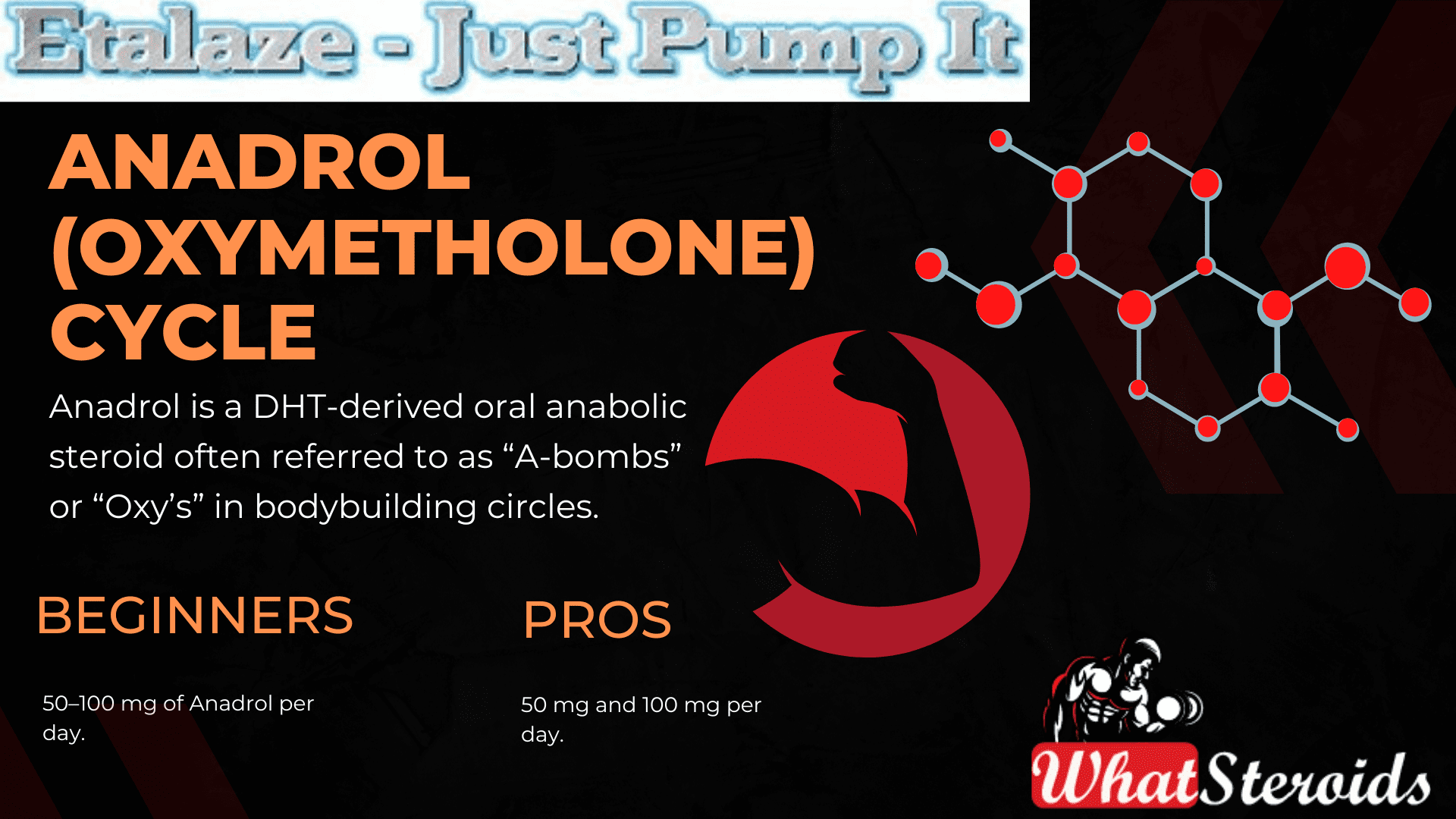
Anadrol (oxymetholone) is a potent oral anabolic steroid frequently used by professional bodybuilders during the off-season for substantial muscle size and strength gains. Let’s delve into the details:
- Anadrol’s Anabolic Power: Anadrol’s anabolic potency is unmatched, making it a go-to choice for those aiming to build significant muscle mass. It can even benefit “hard gainers” or ectomorphs by adding exceptional size.
- Bulking Focus: Anadrol is primarily tailored for bulking cycles. It’s not commonly used for cutting due to potential water retention and bloating. However, some bodybuilders still incorporate it into their cutting protocols.
How Does Anadrol Work?
Anadrol increases red blood cell production, promotes protein synthesis, and enhances nitrogen retention. These mechanisms collectively lead to muscle growth, increased strength, and improved performance.
Let’s explore the mechanism of action of Anadrol (oxymetholone) in both medical and bodybuilding contexts:
Medical Context
Anadrol is an anabolic steroid used to treat various anemias, including acquired aplastic anemia, congenital aplastic anemia, myelofibrosis, and hypoplastic anemias.
Its primary function is to stimulate red blood cell production (erythropoiesis). By increasing red blood cell count, it enhances the oxygen-carrying capacity in the body.
This oxygen boost benefits patients with anemia, as it improves overall tissue oxygenation and vitality.
Also Read: Solutions to Insomnia Associated With Steroids
Anadrol also aids in muscle growth in malnourished or underdeveloped individuals by promoting protein synthesis and lean muscle mass.
Bodybuilding Context
Anadrol is a DHT-derived oral anabolic steroid often referred to as “A-bombs” or “Oxy’s” in bodybuilding circles.
Powerful Muscle Builder: It is renowned as one of the most potent oral steroids for bulking during the off-season. Bodybuilders use it to achieve substantial gains in muscular size and strength.
Androgen Receptors: Anadrol binds to androgen receptors, triggering an increase in protein synthesis. This leads to the development of lean muscle mass and enhanced strength.
Inhibition of Glucocorticoids: The steroid also inhibits glucocorticoid hormones, which are responsible for muscle breakdown. By blocking these catabolic effects, it helps preserve muscle tissue during intense training.
10 Ways A Bodybuilder Benefits from Anadrol Cycle
The steroid offers several benefits to bodybuilders during their cycles. Let’s explore these advantages:
- Rapid Weight Gain: Anadrol is renowned for its ability to promote significant weight gain in a short period. This makes it highly coveted by bodybuilders aiming for substantial size and mass.
- Muscle-Building: Anadrol’s anabolic effects lead to impressive muscle growth. It enhances protein synthesis, contributing to lean muscle mass development.
- Enhances Strength: Bodybuilders using Anadrol experience a remarkable boost in strength. This is crucial for intense training sessions and heavy lifting.
- Oral Form: Anadrol is available in an oral form, making it convenient for users who prefer pills over injections.
- Joint Support: Anadrol provides joint support by increasing synovial fluid production. This can alleviate joint discomfort during intense workouts.
- Fat Loss: While primarily used for bulking, Anadrol can also aid in fat loss indirectly. The increased muscle mass elevates the basal metabolic rate, leading to improved fat metabolism.
- Improved Endurance: Anadrol stimulates red blood cell production, enhancing oxygen delivery to muscles. This results in better endurance during training sessions.
- Efficient Protein Absorption: Anadrol improves protein synthesis, ensuring that every gram of protein counts for muscle growth.
- Powerful Off-Season Gains: Anadrol shines during the off-season when bodybuilders aim for maximum size and strength. It’s particularly effective for those seeking rapid results.
- Positive Impact on Recovery: By promoting muscle repair, Anadrol speeds up recovery between workouts. This allows bodybuilders to train more frequently and consistently.
What is the Recommended Dosage for Anadrol?
Dosages vary based on experience, goals, and tolerance. Finding the right amount of Anadrol to take is essential in bodybuilding to optimize gains while reducing risks. It's advised to begin with a conservative dose and adjust gradually according to how your body reacts.
The usual range falls between 25-50mg daily. However, it's crucial to understand that taking more doesn't always mean better outcomes and could heighten side effects. Consulting with a healthcare provider or seasoned coach in bodybuilding can assist in pinpointing the perfect dosage tailored to your objectives, training background, and well-being.
Let’s explore the common dosing protocols for bodybuilders.
Beginners
Male bodybuilders typically start with 50–100 mg of Anadrol per day.
This dosage is usually maintained for 4–8 weeks during the off-season (bulking phase).
An effective dose for women looking to build muscle is 12.5–25 mg per day for 4–6 weeks.
Pro Bodybuilders
For experienced steroid users, Anadrol dosages can range between 50 mg and 100 mg per day.
Adjust the dose based on individual tolerance and goals.
Longer cycles may be considered, but caution is necessary due to Anadrol’s potency and potential side effects.
Cycle Options
Anadrol-Only Cycle (Beginners): A mildly dosed cycle suitable for beginners. Starting with 50 mg per day, refrain from increasing to 75 mg in week 4. Despite the lower dose, expect substantial size and strength gains1.
Anadrol and Deca Durabolin Cycle
Combining Anadrol with Deca Durabolin can yield impressive results. Adjust dosages based on experience and tolerance.
Anadrol and Testosterone Cycle
Pairing Anadrol with testosterone enhances muscle growth and strength. Dosages vary but typically range from 50–150 mg per day for Anadrol.
Anadrol and Winstrol Cycle
Although less common, this combination balances bulking and cutting effects. Be cautious of side effects.
Anadrol and Dianabol Cycle
Dianabol is the only steroid that rivals Anadrol in weight gain potential. Together, they create a powerful bulking stack.
Are There Any Potential Side Effects of Using Anadrol?
Yes, it can have side effects, including liver toxicity, estrogenic effects, and suppression of natural testosterone production. Responsible use under professional guidance is crucial to minimize risks.
Safety Considerations:
- Anadrol is harsh and should be used by experienced steroid users.
- Beginners often start with lighter compounds like testosterone.
- Post-cycle therapy (PCT) is crucial after Anadrol cycles.
Read: Your Guide to Become A Successful Personal Trainer
How Quickly Can One Expect to See Results?
The rapid onset of results with oxymetholone is one of its remarkable features. Let’s break it down:
Initial Weeks
Within the first 2 weeks, users often experience a noticeable increase in strength. This surge is partly due to water retention and glycogen storage.
Pumps during workouts become more pronounced, and lifts become easier.
Muscle Size and Fullness
Weeks 3–4: Anadrol’s anabolic effects kick in, leading to significant muscle fullness and size.
Users may gain 5–10 pounds or more during this period.
Strength and Recovery
Weeks 4–6: Strength continues to climb, and recovery between sets improves.
Workout intensity escalates, allowing for heavier weights and more volume.
Peak Effects
Weeks 6–8: Anadrol reaches its peak effectiveness.
Users experience substantial muscle mass gains and strength enhancement.
Water Retention and Bloating
Note: The drug’s rapid gains are often accompanied by water retention and bloating.
Some of the initial weight gain is due to water, but it contributes to the overall size and fullness.
Individual Variability
Results vary: Some individuals respond more dramatically than others.
Genetics, diet, training, and overall health play a role.
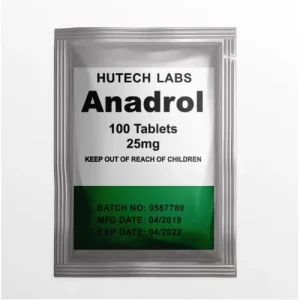 Click Here to Buy Anadrol 25 mg by Hutech
Click Here to Buy Anadrol 25 mg by Hutech
Are There Any Alternatives to Anadrol?
Sure. If you’re seeking natural alternatives to this magical steroid for muscle growth, consider the following options:
SARMs (Selective Androgen Receptor Modulators)
-
- SARMs attempt to replicate the anabolic effects of steroids without the harsh side effects.
- They bind to androgen receptors, increasing testosterone levels with unique tissue selectivity.
- However, be cautious, as SARMs can still produce side effects.
Turkesterone
-
- Pros:
- Derived from plants, turkesterone has anabolic properties.
- It may enhance muscle growth and improve endurance.
- Cons:
- Research is ongoing, and its effects may vary.
- Pros:
Ecdysterone
-
- Pros:
- Ecdysterone, found in certain plants, exhibits anabolic potential.
- It may contribute to muscle development.
- Cons:
- Limited studies exist, and individual responses differ.
- Pros:
HGH (Human Growth Hormone)
-
- Pros:
- HGH plays a crucial role in muscle growth and repair.
- It enhances protein synthesis and overall tissue health.
- Cons:
- Natural HGH production declines with age, but synthetic HGH use requires medical supervision.
- Pros:
Testosterone Boosters
-
- Pros:
- These supplements aim to elevate natural testosterone levels.
- Increased testosterone supports muscle growth and strength.
- Cons:
- Effects vary among individuals, and quality matters.
- Pros:
Tips to Buy Anadrol Online
When purchasing this or any other anabolic steroids online, it’s crucial to be cautious and informed. Here are some tips for buying Anadrol online, along with a mention of a reputable store:
Research the Seller
Authenticity matters: Look for reputable sellers with a track record of providing genuine products.
Reviews and Testimonials: Check customer reviews and testimonials to gauge the seller’s reliability.
Credentials: Verify the seller’s credentials and reputation within the bodybuilding community.
Quality Assurance
Ensure that the product you’re buying is real Anadrol. Counterfeit or low-quality steroids can be harmful.
Avoid Suspiciously Low Prices: Be wary of sellers offering significantly lower prices than others. Extremely cheap products may indicate a scam.
Delivery and Shipping
Consider the delivery options offered by the seller.
Look for sites that provide secure and discreet shipping to protect your privacy.
Some reputable stores offer next-day delivery or free overnight shipping for larger orders.
Legality and Regulations
Anadrol is illegal in most countries without a prescription.
Black Market: Bodybuilders often buy Anadrol through the black market due to legal restrictions.
Know Your Country’s Laws: Understand the legal status of Anadrol in your country.
Reputable Stores
Etalaze: Etalaze is a trusted online store that delivers real steroids for professionals. They offer both liquid and oral forms of Anadrol. Etalaze has been a reliable source since 2008.
Steroidify: Another reputable store, Steroidify, is known for quality products, including injectable Nandrolone (Deca Durabolin).
Remember, always prioritize safety, consult professionals, and adhere to legal regulations when buying steroids online.
Overall
Anadrol’s dual role as a medical treatment and a powerful bodybuilding aid underscores its impact on both health and physique. However, its use requires caution, and individuals should consult professionals before incorporating it into their regimen. Good luck as you embark on a productive Anadrol Cycle!
Bodybuilding Products
Telmisartan In Bodybuilding: An Expert’s Advice
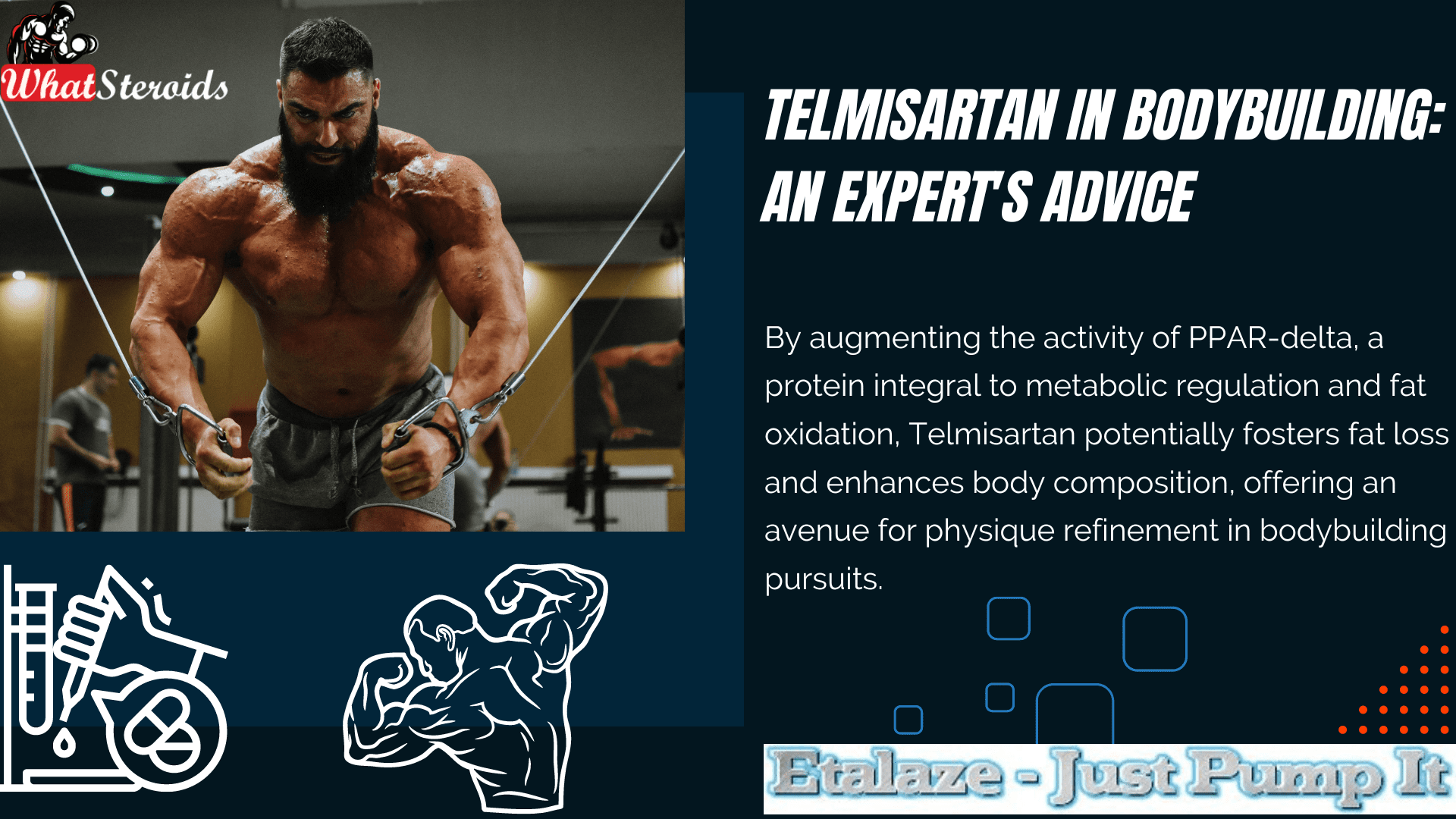
Telmisartan is a medication primarily used in medical circles to treat hypertension, also known as high blood pressure. It belongs to a class of drugs called angiotensin II receptor blockers (ARBs). The drug has piqued the interest of bodybuilders due to its potential benefits beyond blood pressure management.
Mechanism of Action
Telmisartan works by blocking the action of angiotensin II, a substance in the body that causes blood vessels to constrict, thereby reducing blood pressure. By blocking angiotensin II receptors, telmisartan dilates blood vessels, allowing blood to flow more smoothly.
Medical Application of Telmisartan
Treatment of Hypertension
Hypertension is a common medical condition characterized by elevated blood pressure levels. It is a significant risk factor for various cardiovascular diseases, including heart attack and stroke. The drug is prescribed to patients with hypertension to help lower their blood pressure and reduce the risk of associated complications.
Cardiovascular Protection
Telmisartan not only helps lower blood pressure but also provides cardiovascular protection. It has been shown to reduce the risk of heart attack, stroke, and other cardiovascular events in patients with hypertension or other cardiovascular risk factors.
Diabetic Nephropathy
In addition to treating hypertension, telmisartan is also used in the management of diabetic nephropathy, a type of kidney disease that occurs in people with diabetes. It helps slow down the progression of kidney damage in diabetic patients by reducing blood pressure and protecting the kidneys from further damage.
Heart Failure
Telmisartan may also be prescribed in the treatment of heart failure, a condition in which the heart is unable to pump blood effectively to meet the body's needs. It can help improve symptoms, reduce hospitalizations, and increase survival rates in patients with heart failure, particularly those who cannot tolerate other medications such as ACE inhibitors.
Combination Therapy
The drug is sometimes used in combination with other antihypertensive medications, such as diuretics or calcium channel blockers, to achieve better blood pressure control. Combination therapy is often recommended when blood pressure is difficult to control with a single medication alone.
Read More: 12 Muscle Supplements that a Skinny Guy Should Take
Long-Lasting Effects
One notable feature of telmisartan is its long duration of action, with a half-life of around 24 hours. This means that it can be taken once daily, making it convenient for patients and potentially improving medication adherence.
Telmisartan Use In Bodybuilding
The use of Telmisartan within bodybuilding holds multifaceted advantages. Its diverse benefits offer significant potential for bodybuilders seeking enhanced performance.
Initially, the antihypertensive attributes of The drug serve as a vital adjunct in managing and preventing elevated blood pressure induced by AAS (Anabolic Androgenic Steroids). Additionally, Telmisartan exhibits efficacy in mitigating cardiac hypertrophy, particularly left ventricular hypertrophy, a prevalent concern among enhanced bodybuilders, which is often linked to premature mortality.
Moreover, Telmisartan's favorable impact on insulin sensitivity presents a counterbalance against the insulin resistance commonly associated with substances like MK-677, GH, and GH-releasing peptides.
Furthermore, Telmisartan demonstrates anti-inflammatory properties, facilitating a reduction in C-Reactive Protein levels, thereby addressing a significant factor in cardiovascular disease risk among bodybuilders.
Yet, the scope of Telmisartan's benefits extends further. By augmenting the activity of PPAR-delta, a protein integral to metabolic regulation and fat oxidation, Telmisartan potentially fosters fat loss and enhances body composition, offering an avenue for physique refinement in bodybuilding pursuits.
Here a few take aways on the application of the drug in bodybuilding:
Increased Endurance
Some users claim that Telmisartan enhances endurance levels.
Athletes may experience longer and more intense workout sessions without premature fatigue.
Improved Muscle Recovery
Telmisartan’s positive impact on blood flow may aid in post-workout muscle recovery.
It delivers essential nutrients and oxygen to muscles more efficiently.
Anti-Inflammatory Effects
The medication’s anti-inflammatory properties could reduce exercise-induced muscle soreness and inflammation.
Faster recovery between training sessions may be possible.
Fat Loss
Anecdotal reports suggest that Telmisartan may promote fat loss.
It could enhance the body’s ability to burn stored fat.
Muscle Hypertrophy
Some users speculate that Telmisartan might positively influence muscle growth.
This could be attributed to its impact on blood flow and nutrient delivery to muscle tissues.
Optimal Dosage for Bodybuilders
While Telmisartan is prescribed for specific medical conditions at varying dosages, the dosage used by bodybuilders may differ.
Scientific literature on Telmisartan’s direct impact on bodybuilding is limited.
Most information is based on user experiences and anecdotal evidence.
Generally, dosages for bodybuilders range from 20 to 80 milligrams (mg) per day, with some users dividing the daily intake into two doses.
Telmisartan Side Effects and Precautions
Telmisartan, like any medication, can have side effects and precautions that users should be aware of.
Side Effects
Dizziness or lightheadedness: The drug can cause dizziness or a feeling of faintness, especially when rising from a sitting or lying position.
Hypotension: Some individuals may experience a significant drop in blood pressure, leading to symptoms such as weakness, fatigue, or fainting.
Hyperkalemia: Telmisartan may lead to elevated levels of potassium in the blood, which can cause symptoms like muscle weakness, irregular heartbeat, or tingling sensations.
Fatigue: Feeling tired or lethargic is a common side effect of Telmisartan.
Headache: Some users may experience headaches as a side effect of the medication.
Diarrhea: Telmisartan can occasionally cause diarrhea or other gastrointestinal disturbances.
Back pain: Back pain has been reported as a side effect in some individuals taking Telmisartan.
Upper respiratory tract infection: Users may experience symptoms of a cold or flu-like illness.
Sinusitis: Inflammation of the sinuses may occur in some individuals.
Muscle cramps: Telmisartan can sometimes cause muscle cramps or spasms.
Allergic reactions: Rarely, individuals may experience allergic reactions such as rash, itching, swelling, or difficulty breathing.
Precautions
Pregnancy: Telmisartan should not be used during pregnancy due to the risk of harm to the fetus.
Breastfeeding: It is not recommended to use Telmisartan while breastfeeding, as it may pass into breast milk and harm the nursing infant.
Kidney disease: Caution should be exercised in individuals with kidney disease, as Telmisartan can affect kidney function.
Liver disease: Patients with liver impairment may require dose adjustments or close monitoring while taking Telmisartan.
Heart conditions: Individuals with heart disease, heart failure, or a history of heart attacks should use Telmisartan with caution under the supervision of a healthcare professional.
Diabetes: Telmisartan may affect blood sugar levels, requiring adjustments in diabetes medications.
Salt/volume depletion: Telmisartan may cause excessive lowering of blood pressure in individuals with salt or volume depletion.
Hyperkalemia: Patients with conditions predisposing them to hyperkalemia should be closely monitored while taking Telmisartan.
Renal artery stenosis: Telmisartan may exacerbate renal artery stenosis, a narrowing of the arteries that supply blood to the kidneys.
Dual blockade of the renin-angiotensin system: Concurrent use of Telmisartan with other medications that affect the renin-angiotensin system may increase the risk of hypotension, hyperkalemia, and renal impairment.
Driving and operating machinery: The drug may cause dizziness or fatigue, which can impair the ability to drive or operate machinery.
Where to Buy Telmisartan Online
Telmisartan is available through various channels. Here are some options for obtaining Telmisartan:
Local Pharmacies
You can visit local pharmacies such as Walgreens, CVS Pharmacy, Walmart, Harris Teeter, or Target (CVS). Prices may vary, but the drug typically starts at $10.751.
Some pharmacies offer home delivery services, allowing you to order online and have the medication delivered to your doorstep.
Online Prescription Services
Sesame: You can book a same-day video appointment with a healthcare provider on Sesame. They can write a prescription for Telmisartan, and you can pick it up at a local pharmacy.
Push Health: While Telmisartan is a prescription medication, you can consult with a medical provider online through Push Health to obtain a prescription.
Related Article: 6 Best Ways to Verify If a Steroid is Fake
Online Pharmacies
BuyMicardPl: This online platform offers Telmisartan (generic Micardis) without a prescription4.
PharmacyPortal: Check their catalog for Telmisartan availability.
Always consult with a healthcare professional before starting any new medication, especially if you have specific health conditions or are taking other medications. They can guide you on the appropriate dosage and monitor your progress.
Telmisartan Alternatives
While The drug has gained attention among bodybuilders, it’s essential to explore alternative options. Here are some medications that may have similar effects or benefits:
Lisinopril (Prinivil, Zestril)
An angiotensin-converting enzyme (ACE) inhibitor, lisinopril helps lower blood pressure and may have a calming effect on nerves and the heart12. It’s commonly used for hypertension.
Losartan (Cozaar)
Another angiotensin II receptor blocker (ARB) like Telmisartan, losartan can help manage blood pressure and has potential benefits beyond that3.
Olmesartan (Benicar)
Also an ARB, olmesartan is used for hypertension and may have similar effects on blood flow and muscle recovery4.
Valsartan (Diovan)
Yet another ARB, valsartan is prescribed for high blood pressure and could be considered as an alternative4.
Metoprolol (Lopressor)
A beta-blocker, metoprolol can reduce heart rate and blood pressure. It’s sometimes used off-label for social anxiety and movement disorders52.
Propranolol (Inderal)
Another beta-blocker, propranolol may help with anxiety and tremors. It’s used in various contexts, including performance anxiety5.
Candesartan
An ARB similar to Telmisartan, candesartan may have comparable effects on blood pressure and muscle function.
Irbesartan
Yet another ARB, irbesartan could be considered as an alternative for bodybuilders.
Fosinopril
An ACE inhibitor, fosinopril might have similar effects on blood pressure and overall health.
Nebivolol
A unique beta-blocker with vasodilating properties, nebivolol could be explored as an alternative2.
Overall
In conclusion, while some individuals may speculate about the potential benefits of Telmisartan in bodybuilding due to its purported effects on blood pressure regulation and muscle function, it's essential to emphasize that using Telmisartan for bodybuilding purposes is not medically advised or supported.
Telmisartan is a medication prescribed for managing high blood pressure and reducing the risk of cardiovascular events, and its off-label use for bodybuilding carries significant risks and potential side effects. Engaging in such usage without medical supervision can lead to adverse health outcomes and complications.
Therefore, individuals interested in bodybuilding should prioritize safe and evidence-based approaches, consulting with healthcare professionals and adhering to established guidelines for training, nutrition, and supplementation.
Must Read: Tren Cycle for Beginners
Bodybuilding
How Much Is Too Much Cardio? Understanding Heart Rate Zones
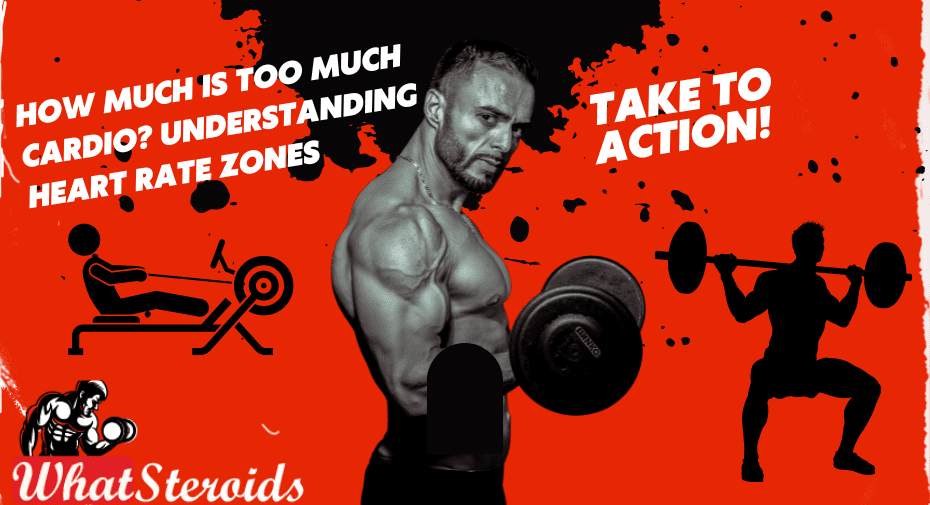
The relationship between cardio and heart rate zones for bodybuilders revolves around optimizing cardiovascular health, improving metabolic efficiency, and supporting overall conditioning while minimizing interference with muscle growth and strength development.
By strategically incorporating cardio workouts within different heart rate zones, bodybuilders can achieve a balanced approach to fitness that enhances both cardiovascular performance and muscular development, ultimately leading to a well-rounded and resilient physique.
Related Article: Emotional Effects of Steroids
Heart rate zones are ranges that indicate different levels of exercise intensity based on your maximum heart rate. Here’s a guide to understanding heart rate zones:
Zone 1 (50-60% of max HR)
This is a very comfortable effort used for warm-ups.
Zone 2 (60-70% of max HR)
This is considered a fat-burning zone. It’s a comfortable effort used for endurance training.
Zone 3 (70-80% of max HR)
This zone improves aerobic capacity and endurance.
Zone 4 (80-90% of max HR)
This zone increases anaerobic capacity and threshold.
Zone 5 (90-100% of max HR)
This is the maximum effort zone, improving speed and power.
Your maximum heart rate is roughly calculated as ( 220 - \text{your age} ). For example, if you’re 30 years old, your estimated maximum heart rate would be ( 220 - 30 = 190 ) beats per minute (bpm).
Remember, these figures are averages and can vary based on individual fitness levels, health status, and other factors.
These Gear Could Help Monitor Your Heart Rate
For bodybuilders and athletes looking to monitor their heart rate, there are several types of heart rate monitors that can be suitable:
Chest Strap Monitors
These provide the most accurate readings and are ideal for continuous monitoring during workouts. The Polar H10 and Garmin HRM-Pro Plus are highly recommended.
Armband Monitors
These are comfortable for longer workouts and are less constricting than chest straps. The MyZone MZ-Switch and Wahoo Fitness Tickr Fit are popular choices.
Wristband Monitors
These are less accurate than chest straps but are more convenient for all-day wear. The Fitbit Versa 4 and Google Pixel Watch are options that also offer additional fitness tracking features.
Each type has its pros and cons, so it’s important to choose one that fits your specific needs and comfort preferences.
It’s also worth noting that while wristband monitors are more convenient, they may not always provide the accuracy required for intense bodybuilding workouts where precision is key.
Always ensure that the device you choose is compatible with any other fitness tracking systems you use.
Cardio Do's and Don'ts
To avoid focusing too much on cardio and neglecting heart rate zones, we recommend these tips:
- Set clear goals: Define your fitness objectives, whether it's building muscle, improving endurance, or enhancing overall health. This will help you prioritize your training methods accordingly.
- Consult a fitness professional: Work with a personal trainer or exercise physiologist who can assess your individual needs and create a balanced workout plan tailored to your goals.
- Incorporate resistance training: Include strength training exercises in your routine to build muscle mass and improve strength. This can help you maintain a healthy balance between cardio and strength training.
- Monitor intensity: Pay attention to how your body feels during workouts and adjust the intensity accordingly. Utilize heart rate monitors or perceived exertion scales to ensure you're staying within your desired heart rate zones when doing cardio.
- Schedule cardio strategically: Plan your cardio sessions around your strength training workouts to avoid overemphasizing cardio. Consider incorporating high-intensity interval training (HIIT) or shorter, more intense cardio sessions to maximize efficiency.
- Prioritize recovery: Allow adequate time for rest and recovery between workouts to prevent burnout and overtraining. Recovery is essential for muscle growth and overall performance.
- Track progress: Keep track of your workouts and progress over time to ensure you're making balanced improvements in both cardiovascular fitness and strength.
Appropriate Diet for Each Zone
When it comes to diet for bodybuilders focusing on different heart rate zones, it's important to prioritize overall nutritional balance and meeting specific training goals rather than tailoring the diet solely based on heart rate zones. However, here's a general list of dietary recommendations for bodybuilders, including 10 supplements that can support their training:
| Protein: Essential for muscle repair and growth. Sources include lean meats, poultry, fish, eggs, dairy, tofu, legumes, and protein supplements like whey protein powder.
Carbohydrates: Provide energy for workouts and replenish glycogen stores. Opt for complex carbohydrates such as whole grains, fruits, vegetables, and legumes. Vegetables and Fruits: Rich in vitamins, minerals, and antioxidants for overall health and recovery. Aim for a variety of colorful fruits and vegetables to ensure a wide range of nutrients. |
Don't Miss: Anabolic Steroids Less Likely to Cause Acne
| Hydration: Stay well-hydrated to support performance and recovery. Drink plenty of water throughout the day, especially before, during, and after workouts.
Creatine: Helps increase muscle strength and power output during high-intensity exercise. Can be consumed through supplementation or found naturally in small amounts in meat and fish. Branched-Chain Amino Acids (BCAAs): Support muscle recovery and growth. Can be consumed through supplements or found in protein-rich foods like meat, dairy, and legumes. Beta-Alanine: Helps increase muscle endurance by buffering lactic acid buildup. Commonly found in pre-workout supplements or consumed separately. Glutamine: Supports immune function and muscle recovery. Can be taken as a supplement or found naturally in protein-rich foods like meat, dairy, and legumes. Omega-3 Fatty Acids: Have anti-inflammatory properties and support overall health. Found in fatty fish like salmon, as well as in fish oil supplements. |
It's important for new bodybuilders to focus on establishing a well-rounded diet that meets their energy needs and provides adequate nutrients to support their training and recovery.
Always consult with a healthcare professional or registered dietitian before starting any new supplement regimen to ensure safety and effectiveness, especially if you have any underlying health conditions or concerns.
Take Away
The question of "how much cardio is too much?" is one that requires a nuanced understanding of individual fitness goals, training intensity, and overall health status. By delving into the concept of heart rate zones, we can gain valuable insights into optimizing cardiovascular training while avoiding potential pitfalls of excessive cardio. Understanding the different heart rate zones, including the aerobic, anaerobic, and maximal zones, allows individuals to tailor their workouts to specific objectives, whether it's improving endurance, increasing aerobic capacity, or enhancing fat burning.
However, it's essential to recognize that more isn't always better when it comes to cardio training. Overdoing cardio can lead to diminishing returns, increased risk of injury, and potential negative impacts on muscle growth and strength development, especially for bodybuilders and other athletes focused on resistance training. Therefore, striking a balance between cardiovascular exercise and strength training is crucial for achieving well-rounded fitness and performance goals.
Moreover, the optimal amount of cardio varies greatly among individuals and depends on factors such as fitness level, training experience, age, and overall health status. It's essential to listen to your body, pay attention to signs of overtraining, and adjust your workout routine accordingly. Consulting with a fitness professional or healthcare provider can provide valuable guidance in determining the appropriate amount and intensity of cardio for your specific needs and goals.
Ultimately, finding the right balance between cardio and strength training, understanding your heart rate zones, and respecting your body's limits are key to achieving sustainable progress and maintaining long-term health and fitness. By approaching cardio training with mindfulness and moderation, individuals can harness its benefits while minimizing potential drawbacks, leading to a well-rounded and effective fitness regimen tailored to individual needs and aspirations.
Must Read: Best Steroid Cycles for Beginners
-

 Bodybuilding2 years ago
Bodybuilding2 years agoNew Arrival Workout Equipment on Amazon for The Disabled
-

 Steroids2 years ago
Steroids2 years agoSupplemental Breast Milk for Bodybuilders: The Secret Behind It
-

 Steroids2 years ago
Steroids2 years agoDwarf Bodybuilders Giving Pros A Run for Their Money
-

 Steroids1 year ago
Steroids1 year agoVOX Testing: Why Bodybuilders Must Have It Tested Regularly
-

 Steroids1 year ago
Steroids1 year agoShavers and Other Body Grooming Equipment for Bodybuilders In 2023
-

 Steroids1 year ago
Steroids1 year agoChatGPT and Other Avenues to Find Great Bodybuilding Coaches
-

 Steroids1 year ago
Steroids1 year agoBest Oil Recommendations Before Competition for Subtle Shimmer
-

 Steroids1 year ago
Steroids1 year agoPowerlifting Vs Power Building: Find Out the Big Difference and When to Shift Between the Two
-

 Beginners12 months ago
Beginners12 months agoTren Cycle for Beginners
-

 Bodybuilding11 months ago
Bodybuilding11 months agoCompetition Prep Cycle for Pro Bodybuilders
-

 Nutrition9 months ago
Nutrition9 months agoEverything Nutritional Food: What’s Too Much Or Too Little
-

 Anabolic Steroids8 months ago
Anabolic Steroids8 months agoLegality of Anabolic Steroids In Latin America
-

 Bodybuilding8 months ago
Bodybuilding8 months agoChia Seeds in A Bodybuilder’s Diet: An Expert’s Advice
-

 Bodybuilding6 months ago
Bodybuilding6 months agoList of FDA-Approved Peptides
-

 Anabolic Steroids9 months ago
Anabolic Steroids9 months agoNatural Steroids for Bodybuilding
-

 Anabolic Steroids7 months ago
Anabolic Steroids7 months agoStart The New Year Strong With These Tips
-

 Beginners9 months ago
Beginners9 months agoCalisthenics: Secret to Building A Better Upper and Middle Body
-

 Bodybuilding7 months ago
Bodybuilding7 months agoUnique Things That Have Redefined Mr Olympia Over The Years
-

 Steroids5 months ago
Steroids5 months agoTrenbolone: Why it Remains A Beast In the Market
-

 Bodybuilding Products4 months ago
Bodybuilding Products4 months agoTelmisartan In Bodybuilding: An Expert’s Advice
-

 Bodybuilding5 months ago
Bodybuilding5 months agoThe Importance of Scaptions in Female Athletes
-

 Bodybuilding4 months ago
Bodybuilding4 months agoHow Much Is Too Much Cardio? Understanding Heart Rate Zones
-

 Bodybuilding6 months ago
Bodybuilding6 months agoFunny Gym Stories and Moments to Light Up Your Day
-

 Steroids8 months ago
Steroids8 months agoThese Bodybuilding Equipment Might Become Obsolete Next Year (See Alternative Upgrades)
-

 Bodybuilding7 months ago
Bodybuilding7 months agoCalorie Dumping: A Bodybuilder’s Guide


